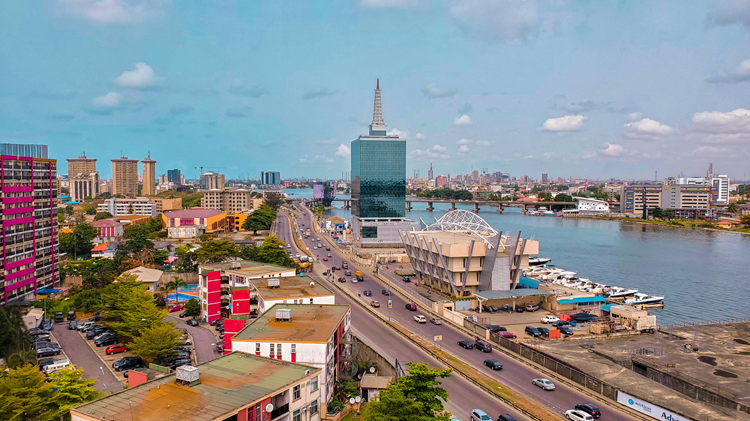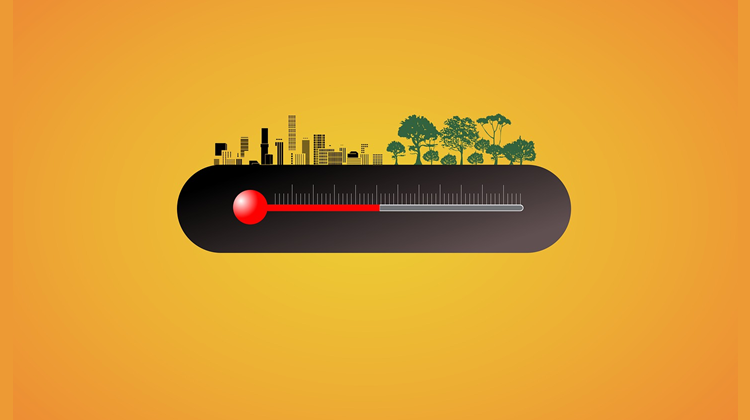Climate-linked mobility poses opportunities, not just threats

Climate mobility poses significant opportunities and threats for Africa to achieve its development goals.
While the global north often frames climate mobility as a threat and a failure to adapt, this framing does not suit Africa and its goals. The continent must prioritise free movement and urban development in order to benefit from agglomeration and the development benefits of migration.
Africa contributes only 3% of historic global carbon dioxide emissions. Yet it bears a disproportionately high share of their adverse effects. Africa is the least climate-resilient continent in the world, with high vulnerability to climate change and low readiness for adaptation to climate shocks.
The Intergovernmental Panel on Climate Change reports that Africa is already experiencing widespread losses and damages including biodiversity loss, water shortages, reduced food production, loss of lives and reduced economic growth. If global warming continues on its current trajectory to surpass 1.5°C, African economies, agriculture, human health and ecosystems will suffer worsening impacts.
Climate-linked mobility is an important adaptation strategy in and of itself
The list of adverse climate effects on the continent continues to grow. According to Yale Climate Connections, five of Africa’s top 30 deadliest disasters have occurred in the past year. Cyclone Freddy in March 2023 was the deadliest tropical storm on record in Africa. Other deadly disasters in 2022 included drought in Uganda, flooding in West and South Africa, and drought in Somalia. Recent severe flooding in the Democratic Republic of the Congo and Rwanda has also been among the deadliest. The effects of slow-onset impacts such as drought, coastal erosion, salinisation, and more continue to grow.
Map: Extreme weather events in Africa in 2022
Source: Carbon Brief
Africa is particularly reliant on rainfed agriculture – in Sub-Saharan Africa, 95% of the food grown is rainfed. Agriculture employs 65% of Africa’s labour force and comprises 32% of its gross domestic product. Moreover, more than 60% of all employed women work in agriculture and they produce 80% of the continent’s food. As climate change increasingly affects crop quality and yields, the most vulnerable communities suffer the worst impacts with the least adaptation options.
Climate change is also emerging as a leading migration driver in Africa. It is disrupting livelihoods and systems in rural and urban settings and contributing directly and indirectly to voluntary migration, involuntary displacement and involuntary immobility within countries and across borders. This blog collectively refers to these as mobility. It is driving more mobility and altering how and where humans move. It could drive up to 86 million internal migrants in Sub-Saharan Africa by 2050.
In reality, most climate migrants move within their own countries
Climate-linked mobility is often inaccurately framed as a failure to adapt and something to be prevented. It is, in fact, an important adaptation strategy in and of itself. Migration offers options for individuals, families and communities facing climate impacts to spread risk and diversify incomes. It can help people build new skills and remit benefits to home communities, enabling them to adapt in place. Financial and social remittances can enable new technologies or strategies, such as drought-resistant crops or irrigation techniques, that help people adapt to climate pressures.
Climate migration is often framed as a South-North issue. Estimates as high as 1.2 billion climate migrants by 2050 have been tabled and global north leaders have warned against mass migration from the global south. At best, these are well-intentioned efforts to compel climate action. At worst, they are xenophobic and aimed at fuelling restrictive migration policies and approaches.
In reality, most climate migrants move within their own countries. Of those who do cross international borders, most stay in their region. International migration is expensive. It requires financial resources and social networks. Very few legal pathways are available and accessible, particularly to low or unskilled workers or farmers.
Migration offers options for individuals, families and communities facing climate impacts to spread risk and diversify incomes
Most people move towards the nearest location where they can find work. Many seek work close by, in places with similar culture, language and currency, or where other community members have gone before them. People often try to remain and adapt in place to maintain community and family networks and livelihood sources. Usually, one or some family members migrate to find work that enables the others to remain in place. Some will move seasonally and circularly. Others will move permanently or temporarily before moving onward.
Rapid urbanisation will be the most significant climate mobility outcome. The World Bank predicts that two-thirds of the world’s population will live in cities by 2050. This number will accelerate unless substantial climate change mitigation and adaptation measures are taken.
In Africa, this is taking place in a context where it is already the most rapidly urbanising continent on the planet. Since 1990, the number of people living in cities has increased by 500 million and the number of cities has doubled from 3 300 to 7 600. The percentage of people living in urban areas in Africa grew from 15% in the 1960s to 43% in 2018 and is expected to pass 50% by 2030.
Urbanisation has significant potential for development if managed well. It contributes to better economic outcomes and higher living standards – approximately 29% of the average annual per capita GDP growth across Africa between 2001 and 2020 is due to urbanisation. It can increase structural transformation, generate economies of scale, reduce logistics costs, and expand labour markets. For individuals, it can improve access to education, drive up incomes, boost health and social services, and enable new skills.
Since 1990, the number of people living in cities in Africa has increased by 500 million
Historically, however, urban poverty has increased in Africa. Up to 70% of Africa’s urban population lives in informality.
Many cities are unprepared for rapid population growth. They lack adequate housing, infrastructure, education, food, water, and health facilities to host many migrants. Climate migrants moving from declining rural areas are often dispossessed and shift from one poverty situation (rural) to another (urban slums). They live in overcrowded, insecure informal settlements lacking sufficient electricity, water and sanitation services. Many of these cities are also susceptible to climate threats.
New arrivals have settled in climate-vulnerable areas, such as floodplains, water-scarce areas, or urban heat islands, where they experience acute climate threats and even secondary displacement.
There has been an encouraging increase in attention to climate migration. Properly implemented regional and continental free movement and integrated policies are important but vastly underused tools. Africa is making progress in this respect, but more is needed.
The cross-sectoral nature of climate change and migration poses significant governance challenges. There is no single policy or law that addresses climate-linked migration. Instead, at least 50 policy frameworks and mechanisms on migration, climate change and disaster risk reduction address different parts.
Around 29% of the average annual per capita GDP growth across Africa between 2001 and 2020 is due to urbanisation
Regional protocols enabling free movement can significantly increase protection and resources for climate migrants. They can provide jobs and trade and empower people to access alternative income opportunities and skills. Free movement enables cross-border circular and seasonal migration, allowing people to return home with social and financial remittances, including knowledge, technology and skills.
Free movement also reduces the need for climate refugee definitions. While commonly used, the term ‘climate refugees’ is misleading as climate change is not covered under existing conventions.
In 2021, IGAD states adopted the IGAD Free Movement Protocol, the first to address people fleeing disasters and climate change specifically. It protects people moving to neighbouring countries before, during or after environmental threats and allows them to remain until it is safe enough to return. This important development allows for other regional and continental free movement protocols.
In 2022 countries making up IGAD and the East African Community signed the Kampala Ministerial Declaration on Migration, Environment and Climate Change. The declaration commits to 13 regional actions that raise awareness of the threats, establish joint priorsities and action plans, and galvanise international support for implementation.
Climate mobility poses significant threats and opportunities for Africa. Managed well, it can help the continent with the green transition and maximise development. Migration is an adaptation measure that should be enabled in a safe, regular and orderly manner to maximise development benefits.
Image: Olukayode Jaiyeola/NurPhoto/Alamy Stock Photo






